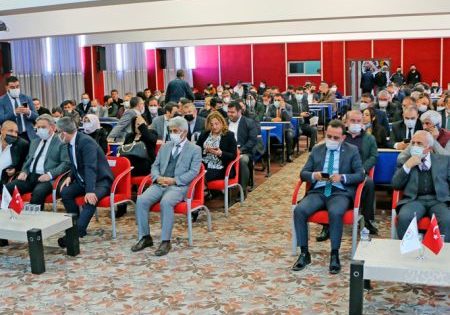Taichung MRT
Jan 1, 2022
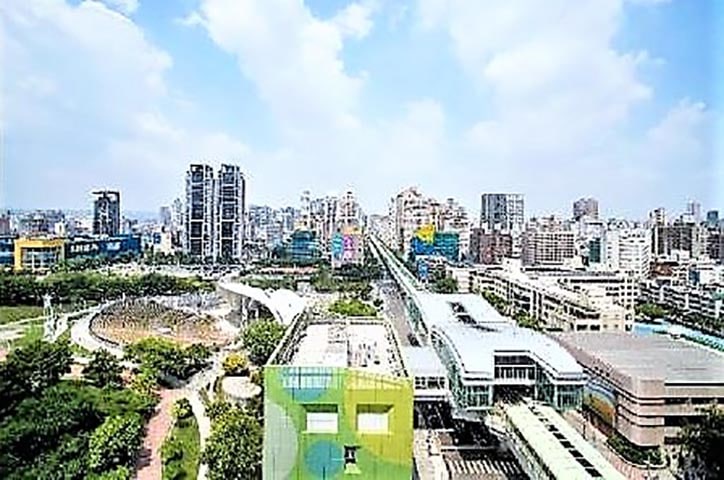
Escalators, New Construction
Taichung, Taiwan
submitted by Ian Lau, Otis Elevator Co.
Project Description
Taichung is Taiwan’s second-largest city, home to more than 2.8 million residents. Despite its size, however, the primary means of transportation by residents has historically been by scooter or automobile. That changed in April 2021 with the opening of the city’s first rapid-transit system, the Taichung Mass Rapid Transit (MRT) Green Line, a two-track, elevated railway running more than 16 km between the Beitun Main Station and the Taichung High-Speed Rail Station. The line’s 18, two-car, fully automated MRT trains operate from 6 a.m. to midnight daily, stopping at 18 stations on a journey that, from start to finish, takes just over 30 min.
Each train has a capacity for roughly 536 passengers, divided into two cars, and operates at a top speed of 75 kph. The line is mostly elevated and encased, with the exception of two terminal stations at ground level. Plans call for the Green Line to grow by several extensions, and three other metro lines are planned that will fan out across the city. The Taichung MRT is Taiwan’s fifth operational rapid transit system.
To move passengers to and from the station platforms, Otis contributed 117 515NPE-L Heavy-Duty escalators and 59 Otis TOVF TIARA elevators across the 18 Green Line stations. Otis’ robust escalator and elevator offerings are designed for the heavy traffic demands of public spaces, including metros, airports and other busy transport hubs.
Building the Green Line took tremendous cooperation and coordination between regulatory, government and, importantly, neighborhood groups. The project, which had been in the planning stages for 30 years and took 13 years to build, is an example of perseverance, commitment, teamwork, relationship-building and coordination. As a result, the Taichung Metro project won the Golden Quality Award, under the Public Construction Commission of Executive Yuan, in 2019.
Because of their locations in residential and commercial areas, seven of the 18 elevated stations required the Otis team to complete installation work overnight, between 11 p.m. and 5 a.m., so as not to disrupt daily pedestrian and vehicle traffic below. Performing in these densely populated areas required open communication channels with local communities about work schedules, and a commitment to meet deadlines, when maneuvering and installing the large and heavy escalators, section by section, into place.
Sam Wang, Taichung Metro CJ930 project manager with Continental Engineering Co., Ltd. (CEC), praised the work done on the vertical-transportation (VT) job, saying:
“Otis was skillful at exercising project management and stakeholder coordination, given the scope of the project and the number of constituencies involved. The team showed adept management of the installation process, such as hoisting equipment in one elevated station while simultaneously arranging for installation in another. The success of the project was due, in large part, to respecting the different perspectives of a number of stakeholders, including residents, vendors and various team members. This inclusiveness was vital in developing a comprehensive and successful installation plan.”
Transportation System Details
Otis Taiwan’s work on the new VT at Taichung Metro was lauded in a letter of appreciation sent by its customer, CEC, at the end of the project. Otis was noted for completing each task within stringent deadlines, while remaining committed to the standard of quality that its customers have come to expect. Working both day and overnight, Otis faced difficult escalator installation, as multi-ton truss sections had to be maneuvered into position by cranes into the metro’s newly constructed concrete structures and within exceedingly tight space tolerances, some as close as 5 to 6 m to surrounding buildings. Otis worked with a third-party consultant to develop specific hoisting and installation techniques, paying particular attention to the angle of lifting and the weight of equipment segments, as well as noise impact and traffic control. This was especially important in densely populated and heavily trafficked residential and commercial areas.

Before the on-site job even began, Otis worked with the metro’s construction team to determine and reserve hanging and hoisting points on beams of the stations. Then, during construction, the team used platforms to install temporary electric cranes on the hoisting points. Each truss segment was hoisted into the station, where mechanics would assemble the huge pieces. Communication with commercial and residential neighbors, as well as regulatory and government entities, was kept open by Otis to let all work recipients know about when and where each installation would be done.
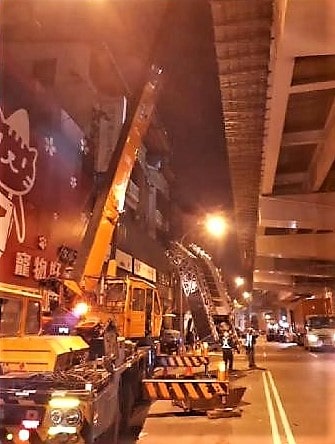
“We had to develop timelines and plans for each neighborhood and then meet those schedules so as not to negatively impact the community,” said Otis Field Operation Manager Yu Sheng Liao. “A key to our success was in communicating early and often what we were going to do, and when, and then meeting that commitment.”
Otis worked with local safety offices to meet stringent regulations on safety, quality control and time and noise management. Senior safety directors visited the job site regularly to ensure compliance. Liao said:
“MRT is known for its stringent standards on quality and safety. That was heightened since the project represented the first public transit system for Taiwan’s second most populous city. As a result, rigorous factory safety and quality inspections and testing, lasting seven to 10 days, were conducted by the customer, consultants and government officials before we delivered our products to the jobsite.”
The Otis team had intensive meetings for verification and confirmation of inspections amid the COVID-19 pandemic, including detailed planning on handover arrangements to address the challenges of pandemic and preventive measures, particularly during the project’s primary and secondary inspection phases.

The elevators and escalators utilized on the project were specifically chosen to meet the mass transit traffic and environmental needs. The public escalators were manufactured to be sturdy and robust. They feature hot-dip, galvanized tubular trusses to manage high pedestrian traffic in outdoor and indoor environments. The heaviest public-use escalators are designed to withstand weather extremes without compromising reliability, safety and quality. Numerous safety mechanisms were built into the system to help monitor passenger safety.
Control System
The project adopted a new Otis GECS-F2 control system for improved safety monitoring and stability. GECS-F2 is equipped with high-torque output and a high-efficiency motor, making it extremely durable, which was proven during heavy rain and flood conditions. In addition, the microprocessor controller features a variable-speed converter that checks the escalator when in operation, making the GECS-F2 very reliable.
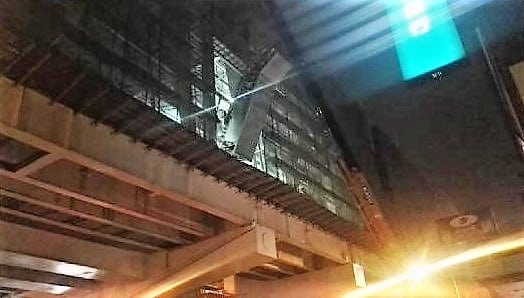
Otis Taiwan worked with suppliers to develop a monitor board to transmit and receive signals to the station control room that can remotely control the equipment during an emergency. The board collects data related to operation mode, failure mode, failure signal and various surrounding detection signals sent from the control system, which is then transmitted to a station control center. The center can remotely control the start or stop of escalators and elevators, and transmit emergency alerts, such as earthquake and fire alarm signals, to each unit. This is especially important in Taiwan, which is located on a seismic zone where earthquakes occur frequently.
Taichung MRT requested additional safety aids for passengers, including sensors to issue voice warnings when passengers attempt to take the wrong direction, and physical barriers to block anyone from sliding down between escalators. All escalators are equipped with missing step detection and automatic stopping if the unit receives a fire or earthquake signal. Each escalator includes three emergency-stop buttons, located at the top, middle and bottom.
Escalator features help extend the lifetime of components even when confronted by heavy traffic demands, resulting in optimum availability and low operation costs.
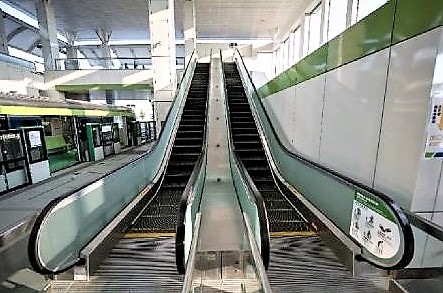
The 59 Otis TOVF TIARA machine-room-less (MRL) elevators were manufactured in Taiwan and installed on-site by the Otis team. An MRT control monitoring system transmits and receives signals so the control room at the station can operate the elevators remotely. Because Taichung MRT recommends elderly passengers use elevators more than escalators to get to and from the platform, doors have been adjusted to close more slowly to specifically address their needs.
The Otis escalators are part of an MRT sustainable development approach. An intelligent lubrication system uses up to 98% less oil than manual lubrication systems. A standby mode (or intermittent operational modes) and LED lighting reduce energy consumption, and the 515NPE-L escalators provide two operating speed options that the station can adjust according to passenger flow. At the same time, it provides a low idle speed when no one is riding, minimizing power consumption. The project was completed in September 2019.
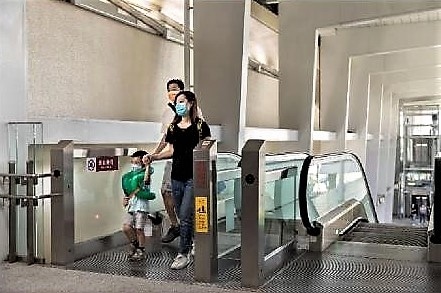
Credits
- Owner: Taichung Mass Rapid Transit Corporation
- General contractor/Project manager: Continental Engineering Co., Ltd.
- Escalator/Elevator services provider: Otis Elevator Co. (Taiwan), Ltd.
- Project construction supervisor: Systemwide E&M Project Office, Department of Rapid Transit Systems, Taipei City Government.
Get more of Elevator World. Sign up for our free e-newsletter.



